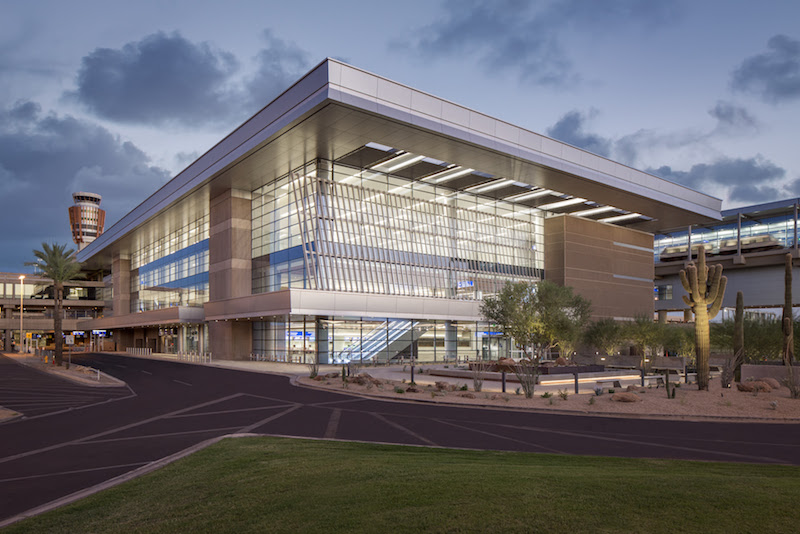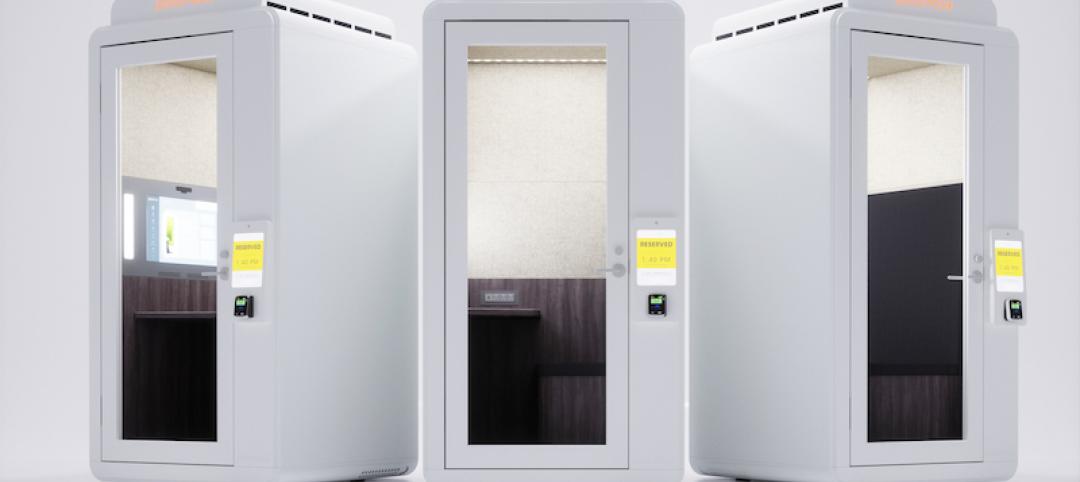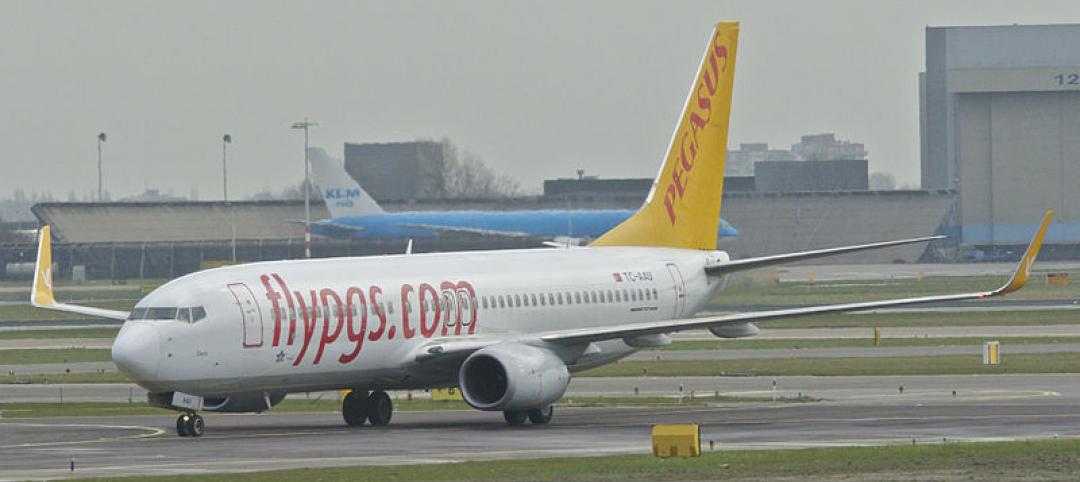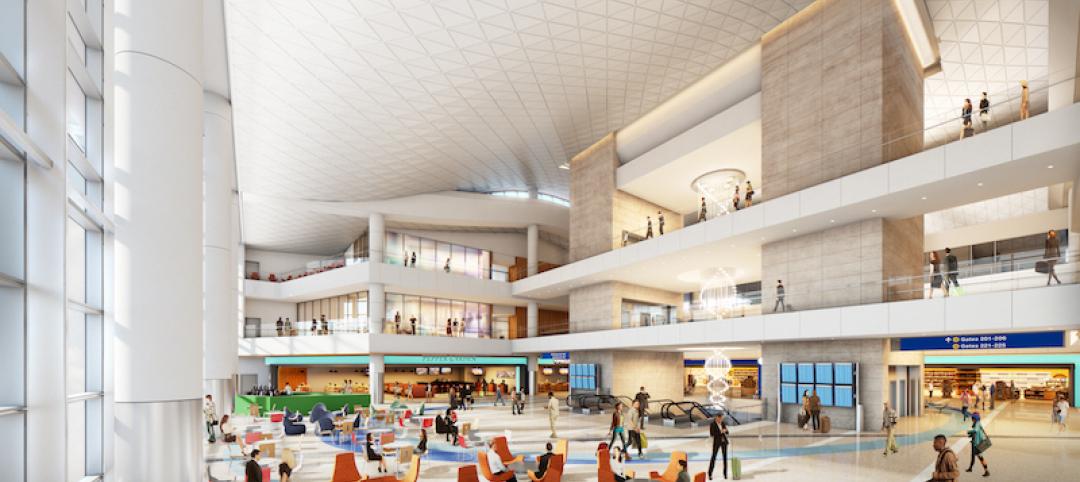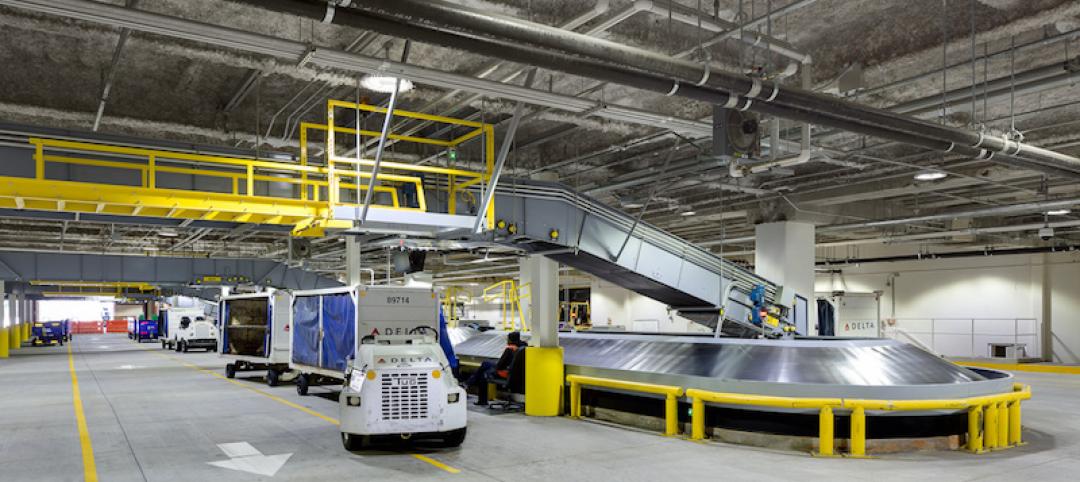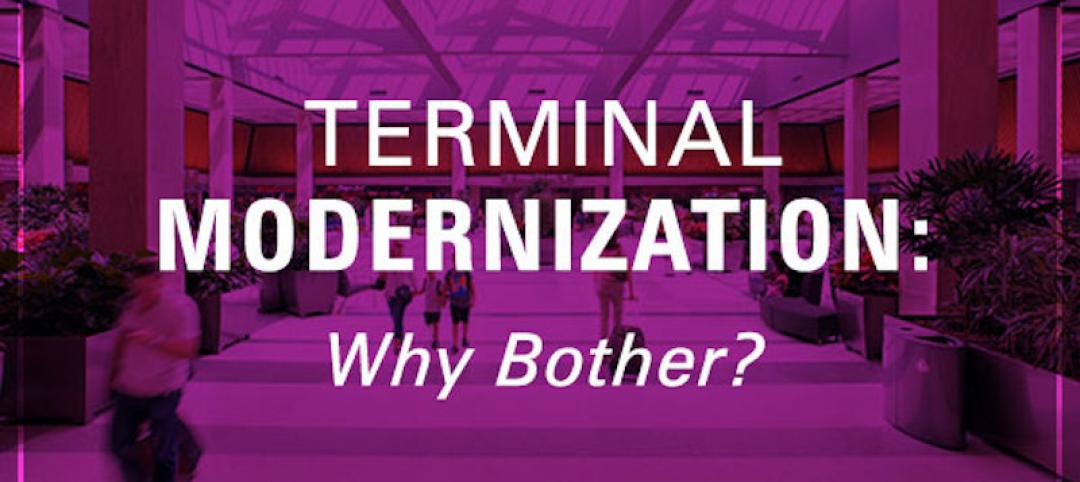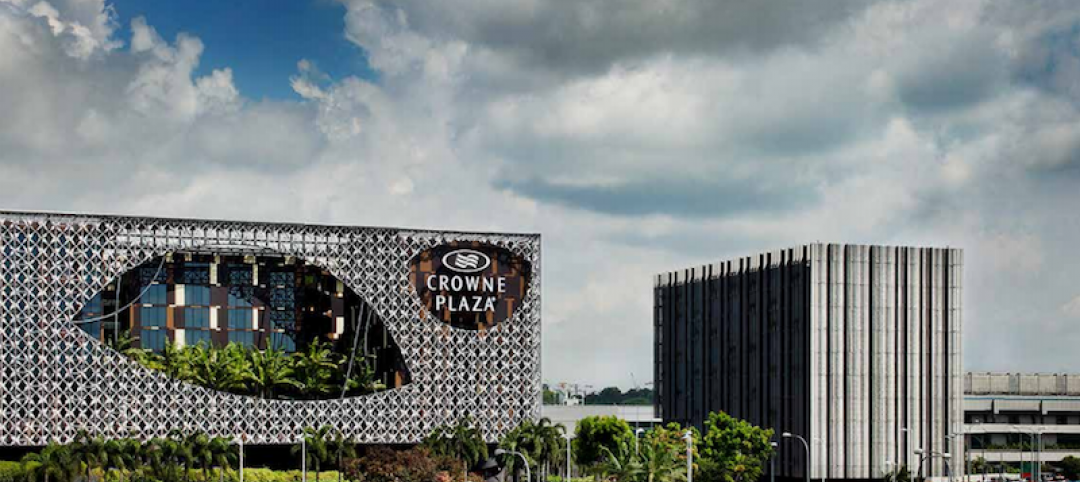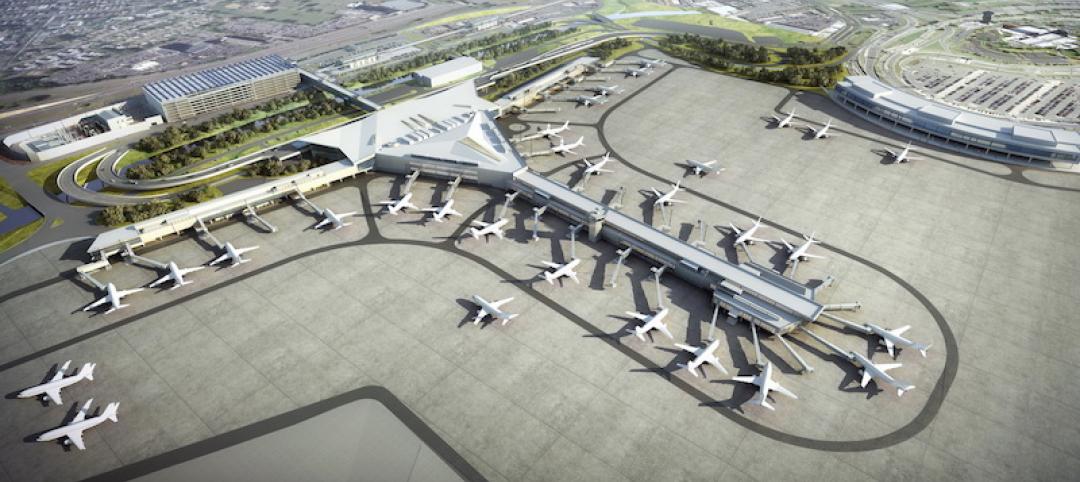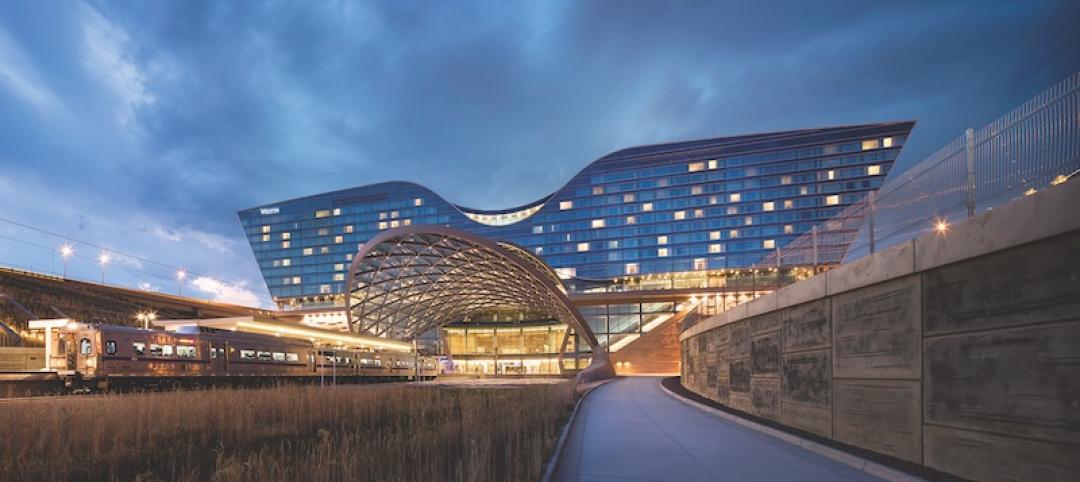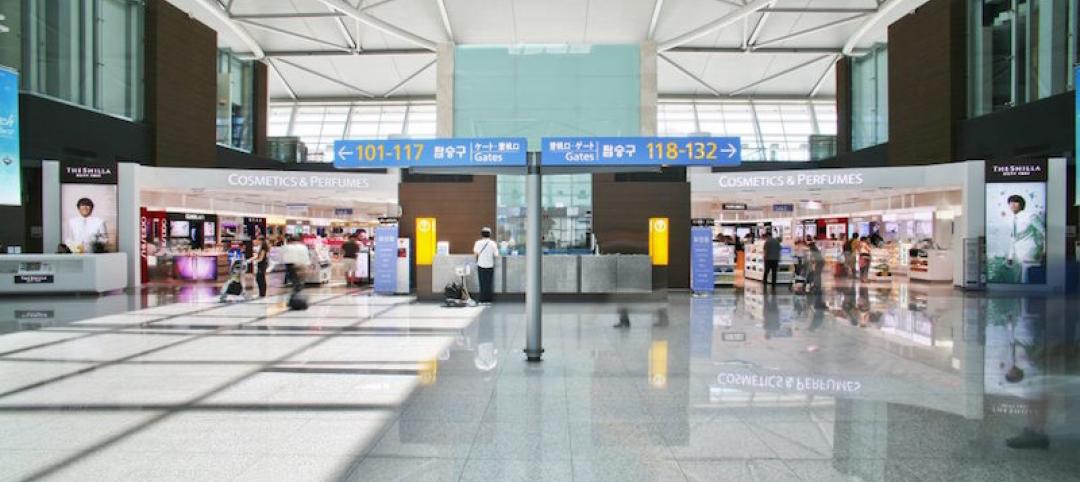The first of a three-part phased modernization of Terminal 3 at Phoenix Sky Harbor International Airport today opened its doors to the public.
The design-build team is comprised of DWL Architects + Planners, SmithGroupJJR and Corgan, along with contractor joint-venture HuntAustin.
With the modernization project, Arizona’s main transportation hub, Phoenix Sky Harbor International Airport, will become the crown jewel among the Sonoran landscape. Unlike many airports, Phoenix Sky Harbor is uniquely located in the bustling City of Phoenix. It serves more than 40 million passengers every year, and has become a destination for travelers across the world.
Capital Improvement Plan
The City of Phoenix’s Capital Improvement Plan for 2015-2020 was the vision to bring Phoenix Sky Harbor International Airport and surrounding areas into a unified campus. It determined a half billion-dollar modernization to Terminal 3 was needed to accommodate increased passenger flow while also creating a world-class travel experience.
Three Component Modernization
The project has three components comprised of renovating the processor building and north concourse, as well as demolishing and building a new south concourse. This, in turn, supports the vision of a multi-modal campus incorporating the PHX Sky Train® and the City’s Light Rail System. The project is being completed in phases to minimize impact to travelers.
The biggest challenge during the initial phase of the modernization program was creating a new and open experience from the original closed-in and internally oriented concrete building. To accommodate the world-class views and provide an open, daylight filled space, the design team manipulated the existing structure by removing large sections of the mezzanine and the pre-cast façade.
“We took what was a very inwardly focused building and made it externally focused, celebrating the beautiful Sonoran Desert landscape,” saysMark Roddy, FAIA, LEED AP BD+C, design director, SmithGroupJJR.The structure of the Terminal 3 building remains intact, while a striking, new glass façade now fronts.
The Journey
The arrival experience on the north curb immerses visitors into the Sonoran desert flora with unique vegetation forms. The glass façade on the west encapsulates a cutting-edge, industry-leading facility. The large overhanging pavilion roof, representative of a porch, and west shading is carefully calibrated to reduce glare and heat gain, while maintaining views of the city and landscape.
The recomposure atrium provides a unique place for passengers to gather and explore the views of the airfield and the Phoenix Mountains Preserve after passing through security.
Located between the north and south concourses, the Great Hall transforms the current passenger hall with higher volumes, views, and natural light, while providing a centralized passenger amenities area.
A Museum Gallery has also been added to the terminal. In future phases of the project, new shops and restaurants will open, giving travelers a chance to continue their Arizona experience even after passing through the security checkpoint.
At the fourth and top level, skylights offer clear views of the sky and the combination of the glass angle and the gradient opacity of the glass eliminate glare. The result is a space naturally illuminated and connected to the environment.
Materiality Wayfinding
Given the need to create a space to accommodate the vast array of diverse commuters, careful consideration was given to the use of materials to help guide an efficient passenger flow. Wood panels, acoustic metal ceiling panels and the use of six shades of terrazzo flooring provide a natural flow with intuitive wayfinding. Atriums at both the departures and arrivals areas provide transparency, so one can see where they are headed whether through the facility or outdoors.
Modernization to Continue
Following the completion of the initial stage will be Phase 2 of the modernization program. Targeted for completion in late 2018/early 2019, it will create a new 15-gate south concourse. New amenities such as food and retail concessions will be added. Finally, Phase 3, to be completed in 2020, will involve the demolition and construction of a new north concourse focused on terminal passenger flow reconfiguration and concessions enhancement.
Related Stories
Airports | Feb 21, 2018
Terminal Modernization: Why Bother? Part II
This is the second post in our series examining why airport operators should bother to upgrade their facilities, even if capacity isn’t forcing the issue.
Airports | Feb 7, 2018
LaGuardia Airport receives eight private work booths in Terminal B
The hub sees over 15 million travelers annually.
Libraries | Jan 29, 2018
Commercial plane that skidded off the runway may become Turkey’s newest public library
The plane was removed from its cliffside perch five days after the incident.
Giants 400 | Oct 5, 2017
On wings of gold: Alternative financing schemes are propelling the high-flyin’ air terminals sector
The $4 billion renovation of New York City’s LaGuardia Airport is the first major U.S. aviation project delivered using a public-private partnership (P3) model.
Giants 400 | Oct 3, 2017
Top 30 airport engineering firms
AECOM, Burns & McDonnell, and Arup top BD+C’s ranking of the nation’s largest airport sector engineering and EA firms, as reported in the 2017 Giants 300 Report.
Airports | Sep 11, 2017
Terminal modernization: Why bother? Part I
A terminal modernization program can be a complicated and expensive task that airport operators may be hesitant to undertake unless necessitated by demands for increased capacity. This is the first post in our series examining why airport operators should bother to upgrade their facilities, even if capacity isn’t forcing the issue.
Hotel Facilities | Jul 5, 2017
It only took 26 days to complete construction on the Crowne Plaza Changi Airport hotel extension
PPVC techniques allowed the project to save time and manpower.
Airports | Jun 26, 2017
Newark Liberty International Airport breaks ground on $2.4 billion redevelopment project
The project includes a new 1 million-sf terminal building with 33 domestic aircraft gates.
Building Team Awards | Jun 8, 2017
Missing link: Denver International Airport and Transit Center
Gold Award: A new mixed-use transit center fulfills Denver’s 28-year plan to improve access to the nation’s fifth-busiest airport.
Airports | May 15, 2017
Five trends for airport retail
CallisonRTKL Vice President Kevin Horn pinpoints how travel retail is changing dramatically.


